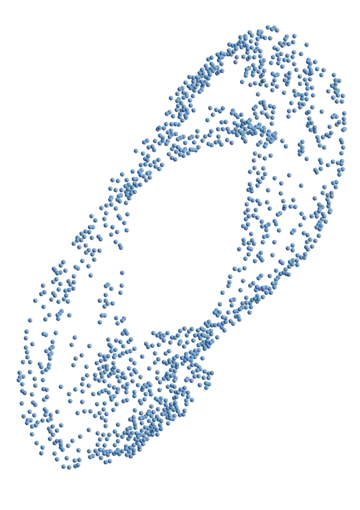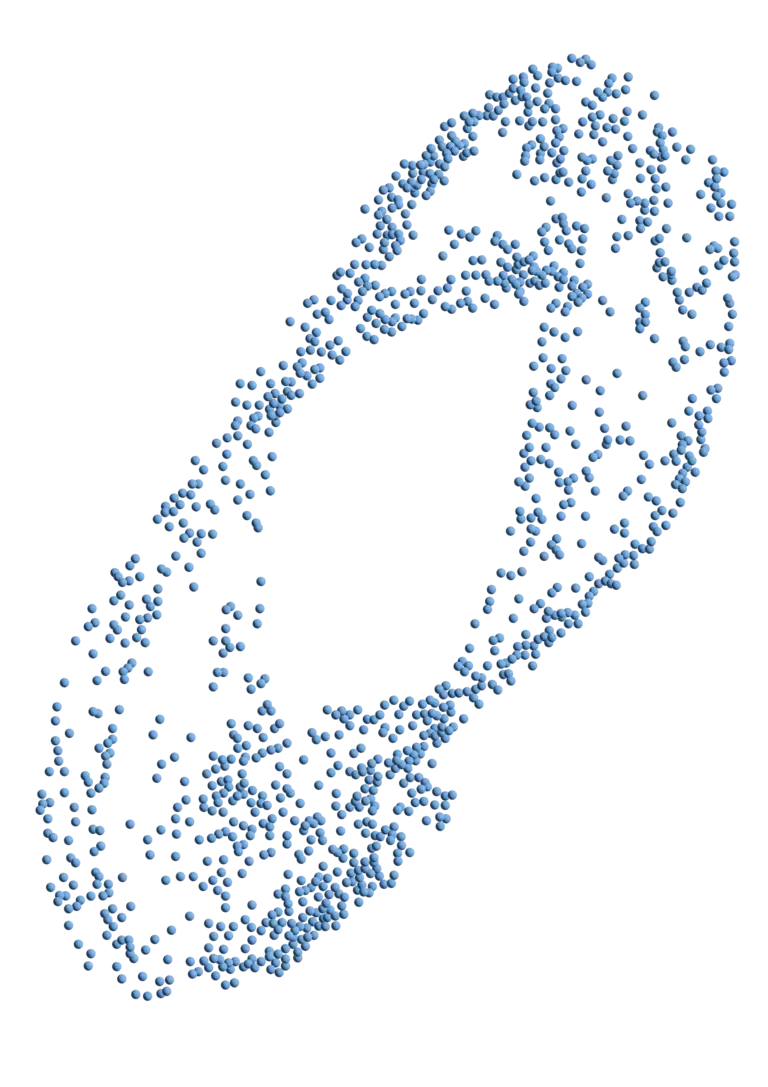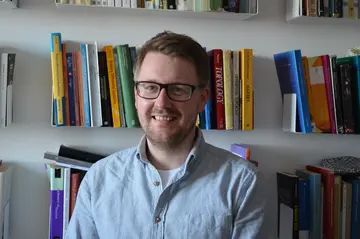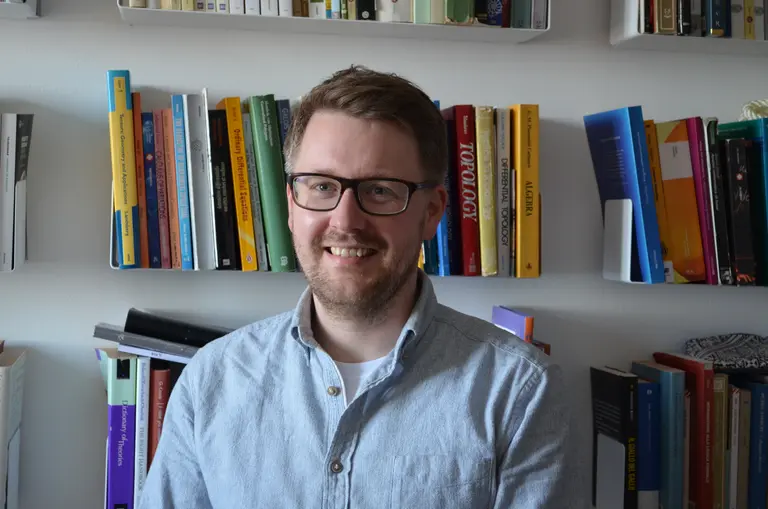
Future proof — Paul Breiding
Published Apr 20, 2022
In April our group leader Paul Breiding moved to the Mathematical Institute at Osnabrück University. He is now holding a W2 professorship for mathematical methods in the data sciences, where he is associated to the Research Unit Data Science. This research center aims to structurally anchor data science as a key technology at Osnabrück University and offers a platform for joint exchange on current topics and issues in research and teaching.
Paul Breiding was the head of an Emmy Noether Research Group at our institute investigating numerical and probabilistic methods for problems in nonlinear algebra. The focus of his group was both on the theoretical foundations and on applications in the sciences. Paul and his team applied mathematical theories and developed dedicated software to solve complicated problems in nonlinear algebra. After completing his PhD on numerical algorithms and probability in 2017 at Technische Universität Berlin under the supervision of Peter Bürgisser, Paul worked as a postdoctoral researcher in the nonlinear algebra research group at our Max Planck Institute, followed by a postdoc stay with a focus on algebraic geometry and data science in the algorithmic algebra research group at TU Berlin. Paul is a member and speaker of the Junge Akademie | Mainz. In 2020 and 2021 he held a Substitute Professorship for Computeralgebra at the University of Kassel. In 2021 he was awarded a SIAG/AG Early Career Prize Awarded by the SIAM Activity Group on Algebraic Geometry.
Interview
MPI MiS: What are you currently researching and how do you plan to develop this topic at your new institution?
Paul Breiding: I find it difficult to pin down my research to a single topic. In my career I have always worked on what was interesting to me. The upside of this is that I learned to communicate with all kinds of different researchers and that I can apply my results in various fields. In my new position I plan to work on geometry and computations of data and will focus on algebraic geometry. I want to describe and analyze data that arises as the vanishing set of polynomial equations.
MPI MiS: How important was your time at the MiS both your personal development and your scientific career?
Paul Breiding: Very important. I was here as a postdoc in the years 2017-2019. After graduating from TU Berlin, I was not sure what do to next. I had a few job interviews outside of academia. After all, our director Bernd Sturmfels strongly encouraged me to apply at the MPI for an Emmy-Noether program. I was hesitant, because I did not feel I was good enough for such a prestigious position. But in the end, I applied and got the job. During those two years I learned an incredible amount of new mathematics and got to know many new colleagues. This definitely boosted my career and was crucial in bringing me to the point where I am now.
MPI MiS: What do you consider to be your greatest achievements?
Paul Breiding: I was part of the Berlin Women Roller Derby Team in the season 2017, when we played German Bundesliga. I consider my greatest achievement that I managed to be accepted in the team and that I was able to play a central role in the season. This time taught me countless important lessons in leadership and teamwork. These lessons are particularly helpful today in my role as a research group leader.
MPI MiS: Did you have a role model that influenced/inspired you to work in science or that helped you in your journey?
Paul Breiding: Sonja Petrovic. In 2019 we co-organized a workshop in Leipzig. Sonja came with her new-born and her mother, who was babysitting when she was busy with the workshop. At the time, I was about to become a father myself and I was afraid that I would not be able to take care of the baby and at the same time continue my career as before. Sonja showed me that being a parent and having a successful career is not a contradiction and this inspired me a lot.
MPI MiS: Did you ever doubt your abilities as a scientist? Why? How did you handle these feelings and how do you stay motivated when life gets tough?
Paul Breiding: Yes, and I still do regularly. My coping strategy is to talk openly with my colleagues about these feelings. There is also a unique person that I must mention: my wife Andrea. She has always believed in me. This has helped me through all difficult times. I would not be where I am today without her support.
Research


Algebraic structures in diverse data
An important task in the mathematics of data is to identify geometric structures underlying the data. When the geometry of data is defined by polynomials, methods from nonlinear algebra can exploit the algebraic structure to extract information. An example of this is molecular geometry: the state space of a molecule is defined by constraints on the distances between single atoms. These distances give rise to polynomial equalities and inequalities.
Numerical and probabilistic methods in nonlinear algebra can be used to explore such state spaces and to compute quantities of interest. Numerical and probabilistic methods in nonlinear algebra can also be applied in more theoretical contexts. An example of this is the so-called Steiner's conic problem, where the application of numerical algorithms is essential for obtaining rigorous proofs. Furthermore, considering probability in algebra provides new insights about the geometric structure of problems.
Scientific Contact
Editorial Contact
Related Content

Future Proof - Samantha Fairchild Future Proof - Samantha Fairchild

Future Proof - Tobias Ried Future Proof - Tobias Ried

Benjamin Gess Appointed as Professor at TU Berlin Benjamin Gess Appointed as Professor at TU Berlin


